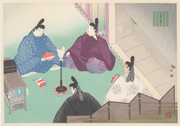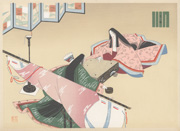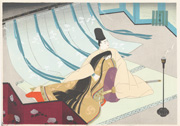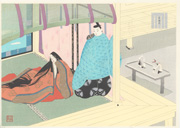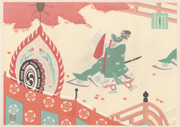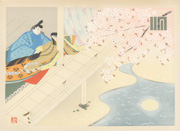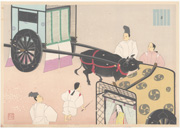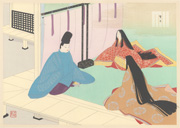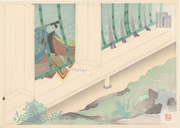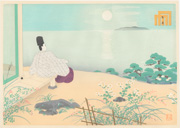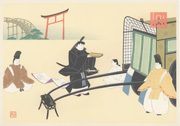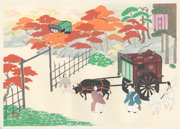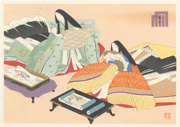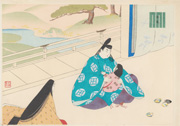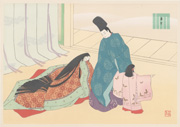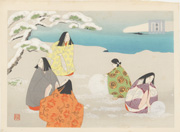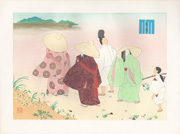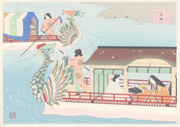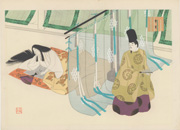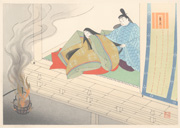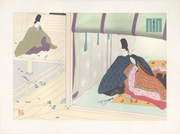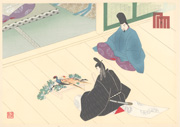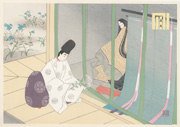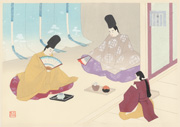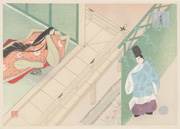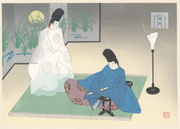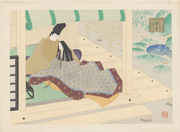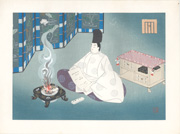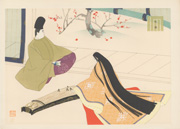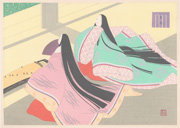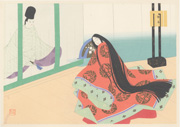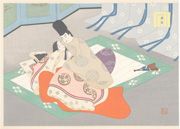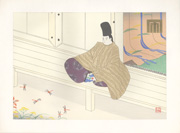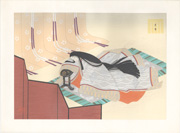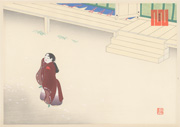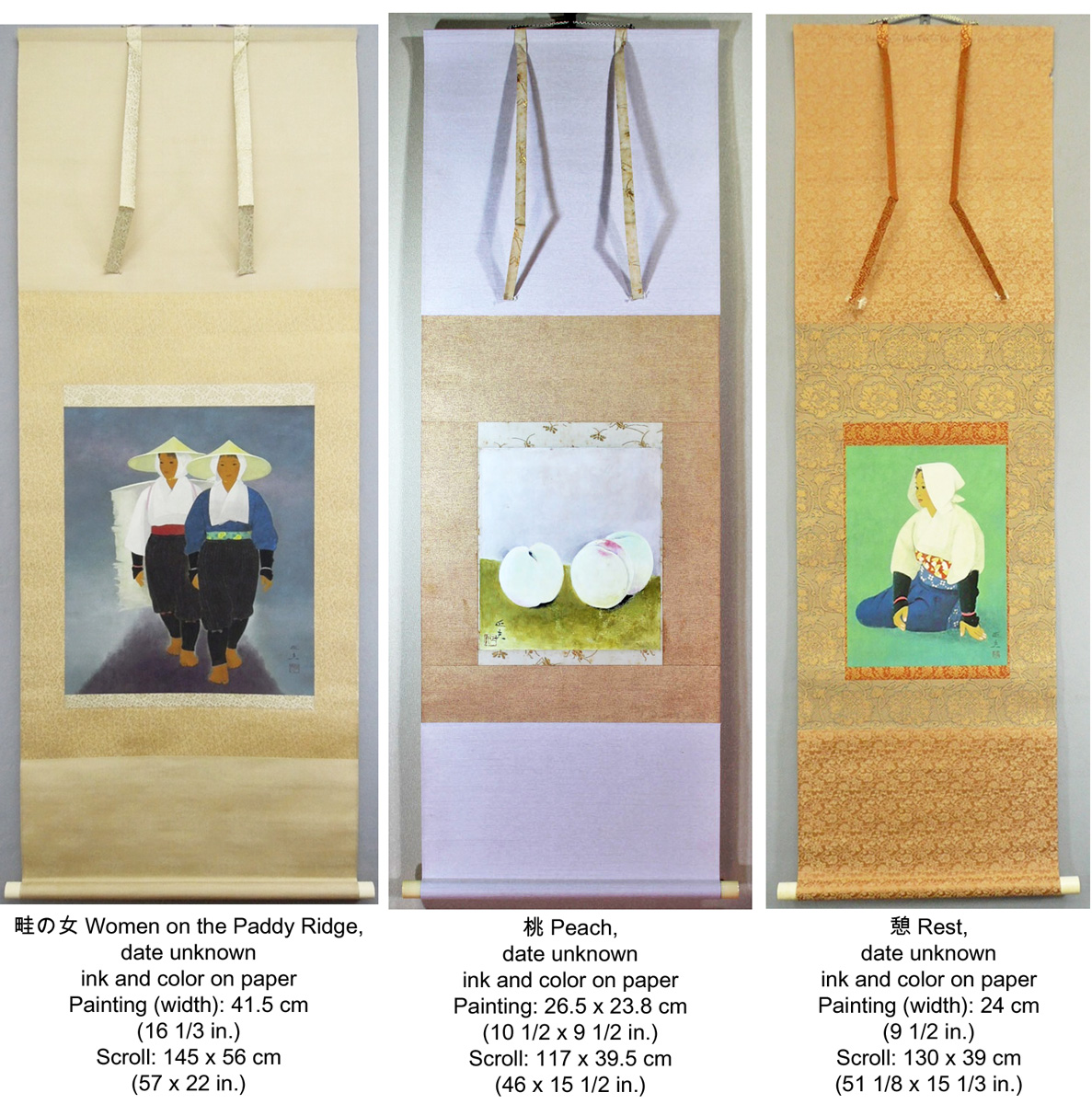Prints in Collection
from the album
Illustrations for Genji monogatari
in Fifty-Four Wood-Cut Prints, c. 1953
IHL Cat. #2441
Hotaru (chapter 25)
from the album
Illustrations for Genji monogatari
in Fifty-Four Wood-Cut Prints, c. 1953
IHL Cat. #2455
Suzumushi (chapter 38)
from the album
Illustrations for Genji monogatari
in Fifty-Four Wood-Cut Prints, c. 1953
IHL Cat. #2552IHL Cat. #2523
A Pavilion (chapter 50)
from the album
Illustrations for Genji monogatari
in Fifty-Four Wood-Cut Prints, c. 1953
IHL Cat. #2446
-intentionally left blank -
Biographical Data
Biography
Ebina Masao 海老名正夫 (1913-1980)Sources: Hirano Museum http://www.hirano-museum.jp/ebina-m2.html and Independent Administrative Institution National Institutes for Cultural Heritage https://www.tobunken.go.jp/materials/bukko/10022.html (viewed 2021-03-23)
The nihonga (Japanese-style) painter Ebina Masao, was born in Kyoto on June 21, 1913. His father, Ebina Chōkō 海老名長紅 (1881-1959), was a nihonga painter who must have encouraged his son's artistic talents as Masao was to attend Kyoto City University of Arts starting in 1933. While in the university's graduate program Masao studied under the nihonga painter Kikuchi Keigetsu (1879-1955). In 1937, while still a graduate student, he received a first prize at the first annual Shin Bunten1 exhibition for his work Sō 爽 (さわやか). Completing graduate school in 1940 he would go on to further acclaim, winning the Kyoto Exhibition Award in 1947 and additional awards from the Nitten2, the successor to the Shin Bunten.
Upon Keigetsu's death in 1955 he began studying with nihonga painter Uda Tekison 宇田荻邨 (1896-1980) and would participate in the formation of Tekison's painting school in 1956. He would win a Grand Prize at the 1956 Nitten Exhibition and the Nitten Hakuju Prize in 1970. In 1958 he was commissioned to paint the fusuma (sliding doors) during the renovation of the Kogosho (Court Room building) of the Kyoto Imperial Palace.
In 1976 he became a Nitten Kaiyu or member of the Nitten association. Ebina passed away at the age of 66 on January 4, 1980.
Ebina Masao is best remembered for his humanistic portrayal of women, whether rural farmers or Kyoto maiko and for his woodblock print portfolio Illustrations for Genji monogatari In 54 Wood-cut Prints 木版画源氏五十四帖, first issued in 1953.
Examples of the Artist's Work
Sources: websites of Komorebi Company and Koubidou
Typical Signatures and Seals
 正夫 Masao |  正夫 / 正夫 Masao / Masao | 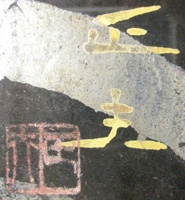 正夫 / 正夫 Masao / Masao |
1 The establishment of theShin Bunten, the successor to the Teiten (Imperial Academy of Fine Arts Exhibition formed in 1919), in 1936 was a further attempt to bring outlying artists and newstyles into the Imperial Academy system, along with figures from the leadingindependent art groups.
2 After 1945 the Shin Bunten was renamed Nihon bijutsu tenrankai (日本 美術展 覧 会), or Nitten for short, and was no longer state run.
last revision:
3/22/2021 created
